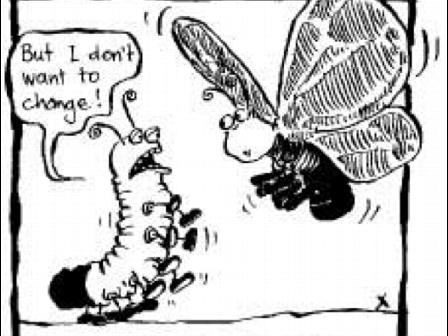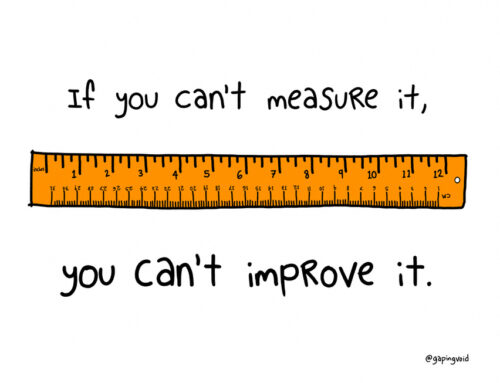Stages of Change
August 10, 2017
Categories: Change
There are a lot of programs out there on how to change something in your life. Whether you want to lose weight, stop smoking, or improve your relationship with your spouse, there’s a book or program out there for you.
Here’s the thing that kind of sucks: Most of these programs don’t work. Sure, they work for some people. But for the majority of folks, the program doesn’t result in lasting change. Something about the program doesn’t work, and the person is back to square one.
Part of the reason why these programs fail is that they treat people using a one-size-fits-all approach. The programs don’t realize that what works for one person might not work for another person. The programs don’t take into account that people are in different places in how they are thinking about change. For example, Bob might be just thinking about quitting smoking, but he isn’t certain he really wants to do it yet. Jimmy, on the other hand, might know for sure that he wants to quit smoking, but doesn’t know what steps to take first. Bob and Jimmy need different change programs. A one-size-fits-all approach won’t work.
One important finding from psychology is that people go through different stages when trying to make a change in their lives. Depending on the stage of change a person is in, different interventions tend to be more effective. Here are 4 key stages of change, along with the kinds of interventions that are most likely to be successful at each stage:
- Precontemplation. People who are in the precontemplation stage don’t think they have a problem yet, and don’t intend to make a change in the near future. Often people in this stage aren’t aware that their behavior is problematic or has negative consequences for themselves or others.
- What doesn’t work? Typical change efforts don’t work if a person is in the precontemplation stage. They don’t even know they have a problem yet!
- What works? A few kinds of interventions are helpful in the precontemplation stage. First, consciousness raising works to increase the person’s awareness about the healthy vs. unhealthy behavior. Second, self-reevaluation encourages the person to think about what their life would be like if they integrated the healthy behavior into their life. Third, social impact informs the person about how their unhealthy behavior is negatively impacting others in their life (e.g., friends, family).
- Contemplation. People in the contemplation stage are considering making a change. They recognize that their behavior might be problematic, but they still are ambivalent about making the change.
- What doesn’t work? Similar to the precontemplation stage, typical change efforts don’t tend to work in the contemplation stage. People in this stage think they might have a problem, but they haven’t come to a conclusion about it for themselves yet.
- What works? In the contemplation stage, a technique known as motivational interviewing is very helpful. In motivational interviewing, the person thinks in-depth about what the change would mean for their life. People consider the pros and cons of making the change, as well as the pros and cons of not making the change.
- Action. People in the action stage know they want to make a change, and are actively doing things to make the change in their lives.
- What doesn’t work? There are a lot of pitfalls in the action stage. For example, ill-defined goals, not having enough social or environmental support, and trying to make too big of a change too quickly can all doom change efforts.
- What works? The action stage is where typical change efforts are most effective. For example, consider the 5 S’s of behavior change:
- Adjust the surroundings. Make your environment work for you, not against you.
- Start small. Don’t bite off more than you can chew. Start with a small change at first, get some success, and then slowly work up from there.
- Be specific. Don’t make broad, ill-defined goals. Be very clear and specific about what you are trying to do, and what would constitute success.
- Schedule it in. Research has found that it takes about 66 days of trying to change something before it starts to feel natural. So for the first 2-3 months, schedule the change like you would a dentist appointment.
- Find a support team. You can’t change by yourself. Find a group of people to help support you and keep you accountable.
- Maintenance. People in the maintenance stage have succeeded in making the change for a while (6+ months) and intend on maintaining the behavior change moving forward. However, they still sometimes deal with setbacks or relapses.
- What doesn’t work? Having a setback is inevitable. We aren’t perfect—it’s just a fact of life. What doesn’t work is to give up on the change effort when you encounter a setback, or feel a lot of guilt and shame about having a relapse.
- What does work? Instead, view the setback as part of the process. Think about the relapse and see if there is anything you can learn from it moving forward. You might have to re-engage in the 5S’s for a while until the setback is in your rear-view mirror.
When you are embarking on a change effort (or helping someone else change), remember the stages of change. One size doesn’t fit all. First, take some time to evaluate what stage of change you are in. Then consider which interventions work best at that stage. Put together a plan of attack that matches your stage of change.

Related Thoughts

Subscribe To My Newsletter
Join my mailing list to receive the latest blog posts.
Receive my e-book “The Mental Health Toolkit” for free when you subscribe.





